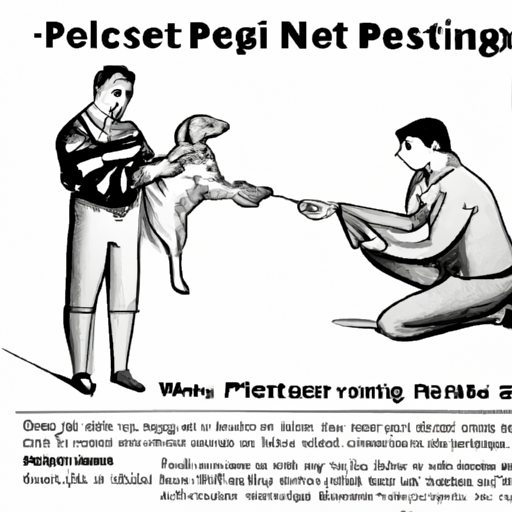1. Understanding The Situation
Before you can spring into action and help your furry friend, it’s important to understand what’s going on. Just like humans, dogs can dislocate their legs. This can occur due to a traumatic event, like a fall or collision, or simply due to an awkward movement. Signs of a dislocated leg in dogs can include:
- Limping or inability to walk
- Visible deformity
- Pain and distress
- Swelling or bruising
It’s crucial to remember that you are not a vet. If your dog’s leg is dislocated, it’s best to get them to a professional as soon as possible. However, in some cases, immediate veterinary care may not be available. This guide is for those times.
2. Calming Your Dog Down
Your dog is likely in pain and scared. Before you can help, you need to calm them down. Use a soothing tone of voice and gentle touches to reassure them.
Here are a few steps you can take:
- Approach your dog slowly and calmly.
- Speak to them in a soft, soothing voice.
- Gently stroke their fur, avoiding the injured area.
Remember, a scared and hurt dog may bite, even if it’s you, their beloved caregiver. So, proceed with caution.
3. Preparing for the Procedure
Your dog’s leg isn’t going to pop back into place on its own. You’ll need to do it. But first, you need to prepare. You’ll need:
- A muzzle (to prevent biting)
- A towel or blanket (to comfort your dog and prevent them from moving too much)
- A splint or something that can be used as one (like a magazine or piece of wood)
- Bandages or strips of cloth
Ensure everything you need is within reach before you begin.
4. Popping the Leg Back In Place
Here’s where you need to be brave and determined. Follow these steps:
- Muzzle your dog to prevent any accidental bites.
- Position your dog on their side with the injured leg facing up.
- Firmly, but gently, grasp the leg above and below the joint.
- Slowly and carefully pull the leg straight, then gently push it back toward the body until you feel it pop back into place.
NOTE: This procedure should be done with utmost care, avoid causing more injury to your dog.
5. Aftercare and Follow-Up
Once the leg is back in place, you need to immobilize it to prevent further injury. This is where the splint comes in. Wrap the splint and the leg securely with the bandages, but not too tight to cut off circulation.
Remember to get your dog to a vet as soon as you can for a proper check-up and further treatment.
| Aftercare Steps | Description |
|---|---|
| Immobilize the Leg | Use a splint and bandages to keep the leg from moving |
| Keep Your Dog Comfortable | Provide a soft bed and minimize movement |
| Get Veterinary Care ASAP | Even if the leg is back in place, your dog needs professional attention |
Frequently Asked Questions (FAQs)
Q. Can I use human pain relievers for my dog?
A. No, many human pain relievers can be toxic to dogs. Always consult with a vet first.
Q. How can I tell if my dog’s leg is dislocated?
A. Signs include limping, visible deformity, pain, and distress. But only a vet can confirm a dislocation.
Q. What can I use as a makeshift splint?
A. You can use a magazine, a piece of wood, or anything rigid that can be secured to the leg.
Q. How soon should I get my dog to a vet?
A. As soon as possible. Even if you’ve managed to pop the leg back in place, your dog needs professional medical attention.



